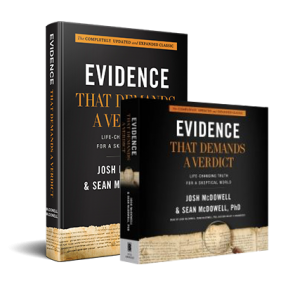
How did scribes record the ancient scriptures?
Before the invention of the printing press, the only way to duplicate a manuscript was to spend hours (weeks? months? years?) laboriously copying it by hand. Note: It took one modern scribe four years, of writing up to 14 hours a day with fine-tipped markers, to handwrite a copy of the Bible! Can you imagine the pressure of not screwing up and having to start over?
Scribes in biblical times used primarily two writing surfaces on which to record scripture: plant fibers and animal skins. The oldest known papyrus (plant) fragment dates back to 2400 BC. Parchment (leather) scrolls have survived from about 1500 BC. To a lesser degree, scribes also used pottery chards, stones inscribed with an iron pen, clay tablets engraved with a sharp instrument and dried, and wax tablets created by covering a flat piece of wood with wax.
Materials Scribes Used for Paper and Pen
Papyrus, a paper made from reeds, was the most common writing material available in biblical times. The papyrus plant grew in the shallow lakes and rivers of Egypt and Syria. As large shipments of papyrus were distributed through the Syrian port of Byblos, scholars surmise that the Greek word for book — biblos — comes from the name of this port. The English word paper comes from the Greek word for papyrus, which is papyros
To make papyrus, the thick stems of the plant reeds were stripped and cut lengthwise into thin, narrow slices before being beaten and pressed together into two layers set at right angles to each other. The two layers were then moistened, pressed together, and smoothed down. The reeds produced a natural adhesive as they were pressed together. Any jagged edges were trimmed off and the sheet cut to the desired size. When dry, the surface was polished smooth with a stone or other implement. Scribes were aided in writing straight lines by the lines that were naturally created by the fibers of the plant.
The inks they used were typically compounded from charcoal, gum, and water. Better inks were created in the 3rd century BC from gallnuts, which are growths or blisters that form on leaves, twigs, and buds of certain oak trees attacked by gall wasps. Iron gall inks, as they are now called, became a permanent jet-black color when dried. The pens used by scribes to write on the papyrus and parchment were fashioned from reeds and quills.
Beyond papyrus, scribes used parchment and vellum as their writing surfaces. These leathers were more readily available in Palestine, as they didn’t have to be imported from Egypt. Parchment and vellum were made by scraping shaved animal skins (sheep, goat, lamb, calf, etc.) with a pumice stone to create a smooth writing surface. Vellum, the higher quality of the two, was often dyed purple and usually written upon with gold or silver inks.
Archaeologists have found both ancient scrolls and books (called codices) made from these sources. Scribes made the scrolls by gluing papyrus sheets together, or sewing parchment together with sinews from the muscles of a calf’s leg and winding the strips of skin around a stick. Though the average scroll was less than 40 feet long, large scrolls were difficult to handle. When scribes began making codices instead, by assembling sheets in leaf form and binding them between covers, the scriptures became much easier to handle and disseminate. Too, it became much easier to locate and read specific scriptures.
The most numerous historical items found by archaeologists as they excavate ancient sites are broken pieces of pottery called ostraca. Unglazed, earthen vessels were commonly used in biblical times, so the broken fragments were easy to come by, and offered a much cheaper alternative to papyrus and parchment. Archaeological excavations in Israel and Jordan have uncovered numerous ostraca from biblical times. Three collections dating back to the seventh and eighth centuries BC confirm details of historical information found in the Bible. These important artifacts are called the Samaria ostraca, the Arad ostraca, and the Lachish ostraca.
Most ostraca were written with ink, but some were incised with a sharp instrument. Smaller pieces of pottery were easily portable, so many of the smaller pottery chards found to date record aspects of daily life: tax records, taxes, letter, notes, receipts, and more. A lot like our note pads today!
The Challenge for Modern Scholars
The difficulty with discovering a handwritten copy of the Scriptures lies in the fact that it was written upon perishable materials. Papyrus did not survive well for any length of time, except in dry areas such as the sands of Egypt or in caves such as the Qumran caves in which more than 800 scrolls — called the Dead Sea Scrolls for the 11 caves along the northwest shore of Israel’s Dead Sea in which they were first discovered — in the late 1940s by Bedouin shepherds.
Papyrus was much less durable than parchment and vellum, which is why most early scriptures written on papyrus only exist in pieces, if at all. Trying to handle these delicate artifacts without damaging them further has proven painstakingly difficult. Fortunately, advances in technology now enable scholars to “digitally unwrap” ancient scrolls too delicate or damaged to touch to read their written text.
One technology, a computer imaging program called Volume Cartography, was developed by University of Kentucky computer scientist W. Brent Seales. Scientists used the technology to digitally unroll and read a badly charred Hebrew scroll first discovered in the 1970s near the Dead Sea.
To the naked eye, the scroll looks like a lump of black charcoal. So researchers were amazed to discover, after it was scanned, that the En-Gedi scroll contains the first two chapters of the Book of Leviticus. Scholars believe the writing is identical to the Masoretic Text (the authoritative Hebrew manuscript of the Old Testament). This suggests that the scroll is possibly the earliest copy of a Pentateuchal book (first five books of the Old Testament) yet discovered.
Fragments of every book of the Hebrew canon (Old Testament) have been discovered to date, with the exception of the book of Esther. These scrolls are priceless, as they are the oldest group of Old Testament manuscripts ever uncovered. Some of the major collections of Hebrew codices and their remains are located at the Vatican Library, the Bibliothèque nationale de France in Paris, the Russian State Library in Moscow, the National Library in Jerusalem, and the British Library in London.
What’s interesting, as additional ancient manuscripts are found, is how they collectively validate the Scriptures included in our modern Bible. Christian apologists typically employ the bibliographical test to substantiate the transmissional reliability of the Bible. The bibliographical test examines the overall number of extant manuscripts and the difference between the date of original writing, called the autograph, and the date of the earliest surviving, or extant, manuscript.
Since we do not possess the autograph of even one ancient document, this test best determines transmissional accuracy for any ancient document. As the Bible outstrips every other ancient manuscript in sheer number and earliness to the autograph, then the Old and New Testaments have a solid basis to evaluate how accurately they have been transmitted.
So Who Put the Bible Together?
If you’re thinking that it was Constantine, an emperor of Rome who championed Christianity after the severe Diocletian persecution, you’re mistaken. Perhaps you got that idea from watching or reading The DaVinci Code? It’s among the many wrong “facts” asserted by author Dan Brown. A fun read perhaps, but definitely a work of fiction.
Some Christians, unfortunately, are easily confused by fiction because they don’t know much about church history OR what’s in the Bible. (Case in point: Does anyone really think Noah interacted with giant rock-beings, as the Hollywood version of that movie suggests? Please say no!)
In 313 AD, Constantine and his co-emperor Licinius issued the famous Edict of Milan, declaring Christianity to be a legal religion. While Constantine did commission scribes to produce 50 copies of the Scriptures “in a convenient, portable form,” so they could be used in the many churches he built in his capital city, Constantinople, Constantine himself played no direct role in determining the contents of the Bible. In our next blog post in this series, we’ll shed light on who did. Stay tuned!

This blog post highlights Josh and Sean McDowell’s recently revised apologetics classic, Evidence That Demands a Verdict. We are certain this fully updated and expanded resource will be an effective evangelism tool for you, and strengthen your faith by answering the toughest questions tossed to you by skeptics. Know what you know, because it’s true. But share this truth with LOVE!



